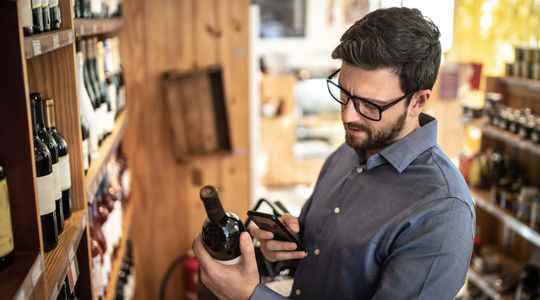- Carbon neutrality at Drappier
With around thirty certified organic hectares in the Côte des Bar (Aube), the Drappier family has been carrying out patient work since 2003 to reduce CO2 emissions during all stages of the production of its champagnes. Objective: achieve carbon neutrality. Already, 75% of the electricity is produced on site – the estate has been equipped with photovoltaic panels and a heat pump – and fuel consumption is reduced to a minimum. Electric cars and straddle carriers, recycled glass bottles made in neighboring Picardy, labels in vegetable ink, upcoming expeditions to the United States by sailboat… Everything has been thought out to give meaning to the primary approach: to produce wines that respect the environment. the environment and the consumer.
- A truly green bottle for Le Philtre
Tackle the glass to push the green slider very far? A reality for Le Philtre organic vodka. “100% recycled glass supposedly does not exist, recalls Guillaume Rappeneau, partner of the brothers Charles and Frédéric Beigbeder. In the glassworks, the machines run non-stop: between two traffic jams, they produce waste.” The key to obtaining eco-responsible glass? Use these scraps which, in France, systematically go to the trash. An Italian glassmaker accepted the challenge, on condition of producing a minimum of 100,000 bottles, never of the same color… A marketing heresy? Not for the founders of Le Philtre who made it an axis of communication!
- Rosecutter resists
In Minervois, in the Hérault, this château is run in biodynamics, agroecology and agroforestry. Also, when INRAE de Pech Rouge looked for winegrowers wishing to take part in a trial campaign to plant varieties resistant to powdery mildew and mildew, the family estate naturally volunteered. The objectives have several aspects: to check the resistance to diseases, the fertility of the plants, their climatic and soil adaptation, without forgetting of course the taste quality of the wines produced. The result is conclusive for the moment: the treatments are limited to only two visits per year, against a good dozen usually. We look forward to the next vintages!
- And sails the castle Maris!
Established in the Minervois since 1997, Robert Eden, grandson of a former British Prime Minister, has been running his 45 hectares of vines biodynamically since 2004. He multiplies the experiments to go further towards carbon neutrality. A pioneer in the protection of nature, his cellar is built of hemp and lime bricks, and he chose the sailboat for shipping his wines to New Jersey – 90% of production is exported. Aboard a 24-meter monohull from the Grain de Sail company, the bottles sail for a month from Saint-Malo to Port Elizabeth. For Robert Eden, the additional cost of 15% is an investment: “This crossing marks the beginning of a great adventure. We believe in the future of this type of transport.”
- Don’t forget the (QR) code!
While the general public aspires to know more about the contents of wine bottles, winegrowers fear that naked and raw information will frighten the consumer. It must be recognized that it is difficult to find your way around the list of additives intended to improve conservation, color and taste, as well as in the technological aids used for winemaking. According to Christian Paly, president of the National Institute of Origin and Quality, “not responding to this request would constitute a strategic error”. But how do you avoid overloading the labels? By introducing a QR Code, as recommended by the common agricultural policy. What, also, to encourage winegrowers to start a CSR approach.
